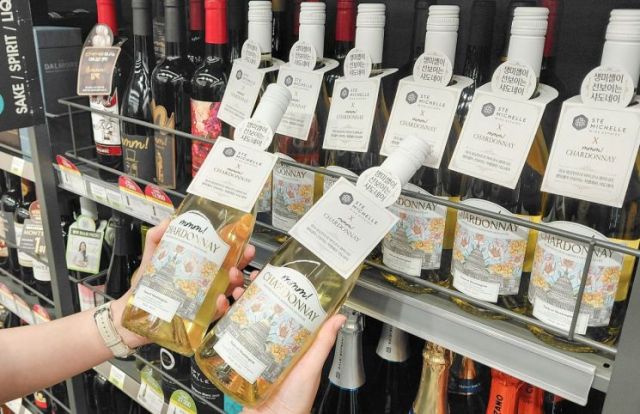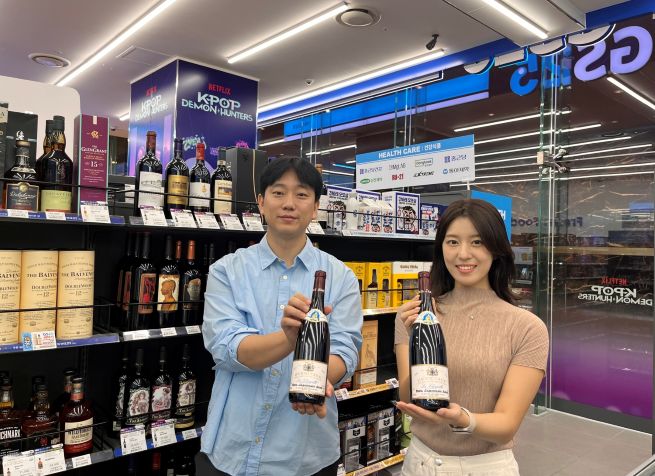Wine25Plus has generated ₩500 million (US$365,000) in sales within just seven months of launching its “Négociant Direct” programme.
As autumn ushers in peak wine season in South Korea, the country’s major convenience store chains are stepping up their game to capture a new generation of wine drinkers. What was once a race to the bottom on price has evolved into a battle over differentiation, transparency, and access to premium wines.
While low-cost promotions remain a key strategy, several brands are now winning over consumers through direct sourcing partnerships with overseas négociants, offering rare and premium wines at near-origin prices.
According to GS25, the company’s smart wine pre-order platform Wine25Plus has generated ₩500 million (US$365,000) in sales within just seven months of launching its “Négociant Direct” programme. Developed jointly with Bordeaux négociants, the service allows consumers to pre-order limited wines via mobile app, which GS25 then imports directly from France based on demand. Customers collect their bottles at GS25 or GS The Fresh stores.
One standout success was the Paul Jaboulet Aîné Hermitage La Chapelle 2003, priced at about ₩300,000 (US$210) per bottle. It sold out immediately, driving more than ₩100 million (US$70,000) in sales.
Founded in 1991 and now operating over 17,500 stores worldwide, GS25 is one of Korea’s largest convenience store brands under GS Retail. The company credited the success to “offering rare French vintages at near-origin prices.” By maintaining a transparent supply chain and pricing structure, GS25 has built trust among consumers—though such openness may unsettle traditional importers.
 Mmm! Chardonnay
Mmm! Chardonnay
Meanwhile, competitor CU, operated by BGF Retail and owned by Lotte Group, is taking the opposite approach, focusing on affordability and everyday drinking. Its private-label line “Mmm!” recently teamed up with Washington State’s Chateau Ste. Michelle to release Mmm! Chardonnay, a bright, fruit-forward white priced under ₩10,000 (US$7.10) during autumn promotions.
Affordable wines remain the driving force behind Korea’s booming wine sector. A CU representative said that between January and September 2024, wines priced below ₩30,000 saw a 13.5% year-on-year increase in sales, while the Mmm! range jumped 60.3%.
With more young and casual drinkers entering the market, imported wine consumption in Korea is showing a clear “return to value.” Retailers are responding by introducing well-made, accessible wines—and consumers are responding in kind.
Last year, E-Land Group’s Kim’s Club launched its 9,999-won (US$7) “Everybody’s Wine Plus” line, which sold out within seven days. The first batch of 4,000 bottles cleared in a month. Similarly, Shinsegae L&B’s 7,900-won (US$5.60) Chilean wine has surpassed 2 million bottles in cumulative sales over five years.
Yet, French wines continue to dominate Korea’s premium segment. In the first half of 2025, France remained the country’s top wine supplier, with imports valued at US$75.35 million, accounting for 35.7% of total import value. French wines also had the highest average import price among the top 10 countries, at US$18.16 per litre, underscoring their continued positioning as luxury products.
Even so, French wines are not immune to price adjustments. In the first half of 2025, import volumes rose 8.42%, but total value fell 6.47%, signalling that more affordable French labels are increasingly making their way into Korean consumers’ glasses.
Like this:
Like Loading…
Discover more from Vino Joy News
Subscribe to get the latest posts sent to your email.
Continue Reading


Dining and Cooking